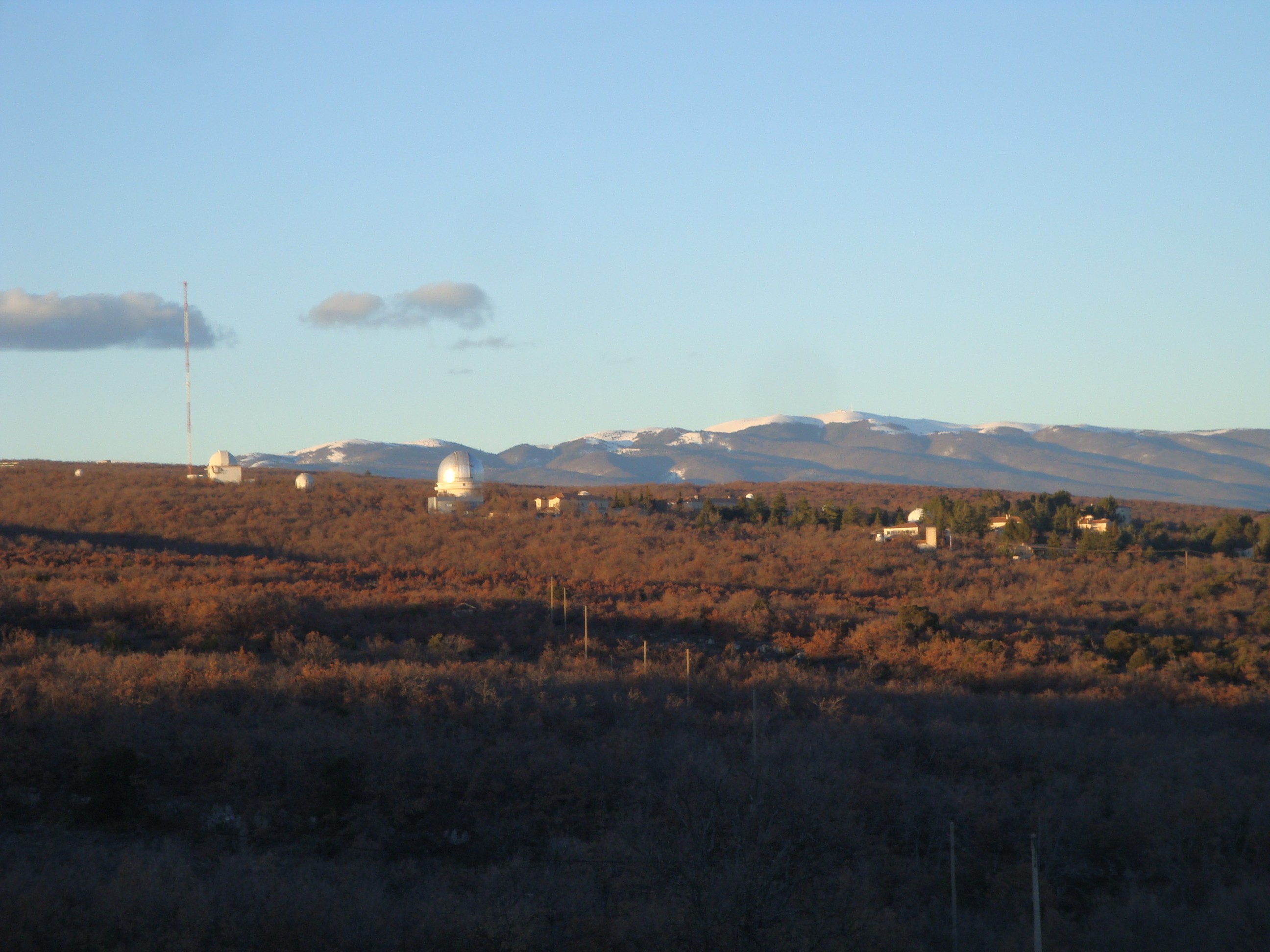
A stroll around the Observatory
Reasonable trails, paths and tracks succeed each other around the Saint-Michel Observatory to offer to the hiker chapels, a Romanesque tower, dovecotes but also beautiful views of the Craux, Mount Lure, the Valensole plateau... Lastly, it is highly recommended to to take advantage of the immediate vicinity of the observation site for astronomy, the environment and the study of the atmosphere of Haute-Provence, to go make a unique discovery of the sun, our star.
12 points of interest
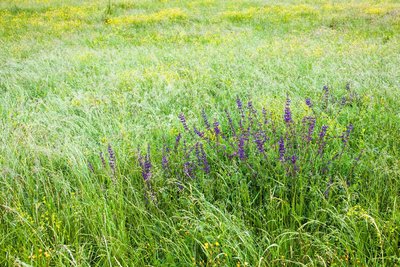
Prairie de Rimourelle - ©David Tatin  Water and rivers
Water and riversRimourelle and its meadows
This rather preserved stream and the damp grasslands that border it harbour a remarkable diversity of plants and animals. There is a water spring and precious natural environments in this very dry environment and in some sections, the presence of many rare and protected species: European pond turtle, White-clawed crayfish, Dwarf bulrush (water plant), Souffia (fish) and Mediterranean barbel ... The banks and riparian vegetation are sometimes in poor conditions due to past work.

Concours des prairies fleuries - ©David Tatin  Elevage et pastoralisme
Elevage et pastoralismeThe Farming Contest of Meadows
If you look to the west, a vast plain extends before you in which natural meadows remain. These "flowering meadows" are made of quality flora to feed herds. Often located on areas at risk of flooding, the grass grows naturally. One of these meadows has been evaluated by a panel of student farmers and was awarded at the International Agricultural Show in Paris in March 2016.
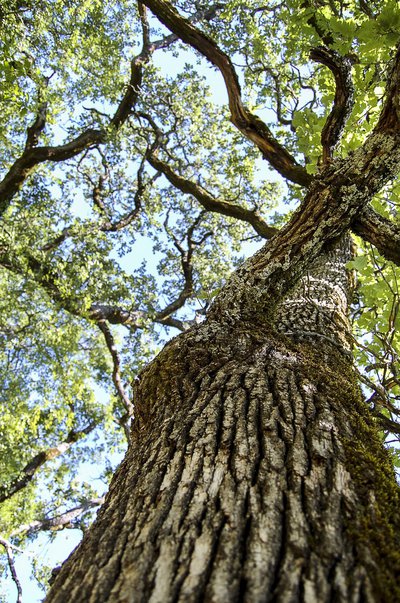
Tronc d'arbre gîte - ©Patrick Serwatka  Fauna
FaunaTree sheds
Kept for the production of acorns and the renewal of forests, some trees measure more than 50cm in diameter. Several hundred years old, they carry with them the signs of aging. A true social housing for insects and bats, these residents occupy the slots and holes made by woodpeckers. To preserve the wood cuts, the trees were inventoried and marked with a white triangle.
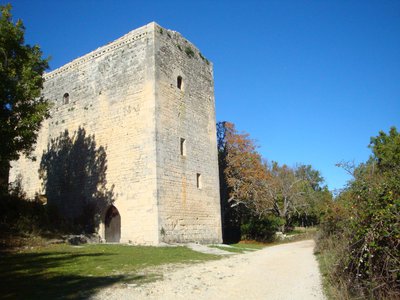
La tour de Porchères - ©Eric Garnier - PNR Luberon  Patrimony and history
Patrimony and historyThe Tour de Porchères
Dated from the 12th century, this tower is classified a historical monument. In the archives, this tower is reported as a barn. It therefore certainly stored crops but probably also served as a watchtower. In 1861, it was converted into a chapel by the owner back then, Léon de Berluc-Perussis. The stone door calls to linger. A village of a dozen families had settled around the tower in the early 17th century.

Troupeau de moutons sur les Craux - ©DR  Elevage et pastoralisme
Elevage et pastoralismeThe Craux: pastoral heritage
The traditional extensive grazing is key to the conservation of this unique ecosystem. It keeps dry grasslands and juniper formations which intertwine. These open areas have considerably reduced since the late 19th century due to agricultural decline and plantations. Support of pastoralism allows the annual renewal of grass resource for the herd and the diverse flora despite the extreme conditions.
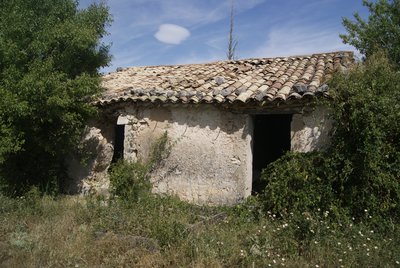
Cabanon abandonné - ©DR  Fauna
FaunaA chapel serving as a maternity ward
In the St Jean Chapel and the surrounding sheds, bats of the Lesser Horseshoe Bat species find there favourable conditions to their development. A true maternity ward, these buildings, heated by the sun, are suitable places for birthing and nursing the young from April to August. Please do not disturb them.
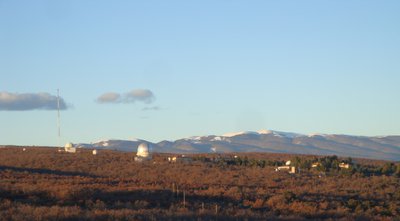
Aperçu des coupoles de l'observatoire - ©Eric Garnier - PNR Luberon  Patrimony and history
Patrimony and historyThe OHP: a recognized observation site
The Observatoire de Haute-Provence (OHP) of the CNRS (the French National Center for Scientific Research) founded in 1937 is famous internationally for excellence in astronomy (exoplanet researchespecially: the first discovery in 1995 using the telescope of 1.93 m and its spectrograph Sophie»). also known as atmospheric science (study of the ozone layer) and ecology (O3HP). Very active in the dissemination of scientific culture, it receives more than 11000 visitors per year.

télescope 193 - ©DR-CNRS  Patrimony and history
Patrimony and historyTelescope 193
In astronomy and astrophysics, the site hosts several instruments, including the telescope of 1.93m in diameter that led to the discovery of the first exoplanet; it features an innovative spectrograph which ranks among the best in the world.
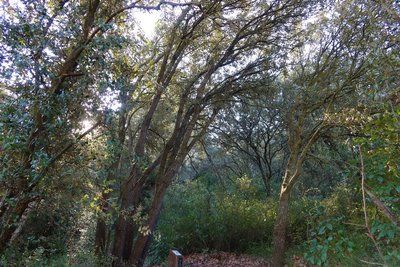
Chêne vert - ©Axelle Baumard - PNR Luberon  Flora
FloraTake root in the limestone
Do not dig, there is only limestone. Here the soil is not deep, the calacil is thin. And so, each crack is an opportunity for an acorn to find something to root on and grow on a holm oak. Slow growing, it measures up to 30cm in diameter despite being a centenarian. To prevent water loss through evaporation, this species has evolved over thousands of years by keeping small leaves.

Forêt de chêne pubescent remarquable de l'OHP - ©Sophie Bourlon - PNR Luberon  Flora
FloraO3HP: the oak forest with a magnifying glass
On the site of the Observatoire de Haute-Provence, O3HP (Oak Observatory at OHP) studies the dynamics, functioning and biodiversity of the forest of pubescent oakagainst the climate changes. ambitious project to predict future changes through a gateway instrumented system, a rain exclusion system,and sensor network (temperature, humidity ...).
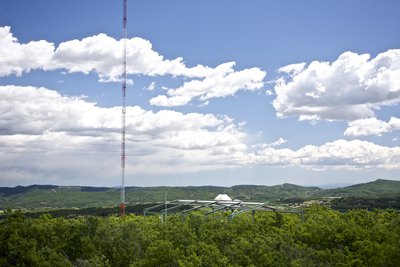
Vue sur le mât ICOS - ©DR  Peak
PeakThe ICOS (Integrated Carbon Observation System) tower
In atmospheric sciences: the geophysics station is one of the largest global network of detection of changes in atmospheric composition (NDACC). The measurements are performed by LIDARs (including a laser), spectrometers and weather balloons. A tower 100m high, allows the multiple sampling on the composition of the air.
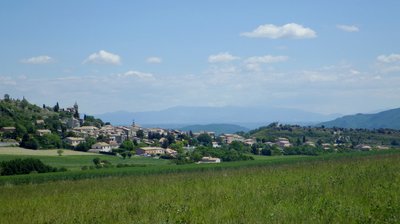
Vue sur Saint-Michel-l'Observatoire - ©Françoise Delville - PNR Luberon  Panorama
Panoramabucolic countryside and vast panoramas
This walk goes through a wide basin, slightly hilly, consisting of a real landscape mosaic. This diversity is related to the sporadic presence of rock and water that allowed the development in certain areas of lush farming. This bucolic landscape is embellished with vast panoramas of the Luberon to the south, the Lure mountain to the north and the Alps to the east. The villages, with their well marked outline, are located on rocky spurs on the outskirts of the valley.
Description
Turn left at the back of the car park, pass the town hall and follow the street to the right for 300m.
1 - Take the little road that goes to the right below the D305 and then take a quick right and go past the cemetery. Go left at the first intersection. After a steep hill, turn right on the small road which turns into a path 200m further. Behind a well marked shift to the right, climb the narrow path to the left. At the top, take the track to the right, then 70m further, continue straight. Turn right again and then left. At the crossroads'Tour de Porchères'', turn left, walk along the tower, go past a house then turn right. Then, from the right, go around the old quarries of Porchères (private property). Take a right at the next Y-shaped fork.
2 - At the crossroads ‘"Petit Sauvan", turn left towards Saint-Jean. Turn left after 150m, then continue straight through a path that narrows down and enters the woods. Reach a track and continue straight along a beautiful house and continue the track. When you come out on the track, turn left on the small road. Go down the road and reach the D305. Continue on the left for 200m.
3 - Turn right, pass between a farm and a shed, then rise slowly. At the first apparent crossroads (transformer) turn left. Go along an old wall, take a slight descend and go up the opposite side of the valley. After a marked turn on the left, turn right and come out on the plateau. Continue straight for 500m.
4 - At the crossroads (point 632), take the path going down to the left and thus reach the D5, a kilometre below. When you come out on the road, take a quick left and take the small road. Continue straight at the next intersection and go down to the village. After the wash-house, turn right and return to the starting point through the streets used to go.
- Departure : Car park of Bardouin, south of the town hall, Saint-Michel l'Observatoire
- Arrival : Car park of Bardouin, south of the town hall, Saint-Michel l'Observatoire
- Towns crossed : Saint-Michel-l'Observatoire and Mane
Forecast
Altimetric profile
Recommandations
Caution with your ankles on the rocky passages after point 3.
Information desks
House of the Luberon Regional Nature Park
60, place Jean Jaurès, 84400 Apt
In the heart the old town centre of Apt, the House of the Luberon Regional Nature Park welcomes you in a town house of the 18th century. The permanent exhibition of the geology museum has a rich collection of fossils evidencing the geological history of the Luberon.
On sale at the shop: books, maps, guidebooks, games, posters...
Open Monday to Friday from 8:30 am to 12:00 pm and from 1:30 pm to 6 pm (and on Saturday, depending on the program). Free admission.
OTI Forcalquier-Montagne de Lure
13, place du Bourguet, B.P. 15, 04301 Forcalquier
Transport
Access and parking
Village of Saint-Michel-l'Observatoire, at 16km from Manosque by the D907 and D105, or 21km from La Brillanne by Forcalquier and the D4100 and D105.
Parking :
Report a problem or an error
If you have found an error on this page or if you have noticed any problems during your hike, please report them to us here:


